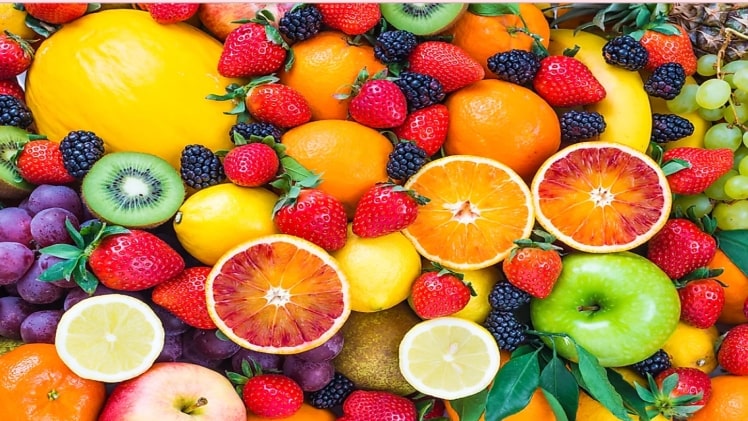A significant approach to manage prediabetes and type 2 diabetes is via a healthy, well-balanced diet. Being mindful of carb consumption, consuming smaller meals repeatedly, and opting for healthy, nutrient-dense alternatives might aid an individual manage the risks related to high blood sugars.
Whether a person is trying to manage or control diabetes, his or her nutritional demands are almost similar as any other person. Hence, no specific foods are essential. However, a person must pay attention to some food options, markedly the carbs a person consumes. Losing just 5% to 10% of the total weight might aid a person in reducing his or her glucose levels, blood pressure, and cholesterol levels.
How to reduce high blood sugars?
Weight management and healthy intake of foods may exert a profound effect on a person’s energy, mood, and sense of wellbeing. Although, a person has already been diagnosed with diabetes, it’s never too late to incorporate a positive modification. By consuming healthier, losing weight, and being more active, a person may lower the signs or even reverse diabetes.
If a person consumes anti-diabetes drugs, regular diet, and regular quantities of several foods help a person attain the most out of the slightest quantity of medicine. As, diabetic patients are at a high risk of high blood fats and high blood pressure, it makes sense to opt for food items that are heart-healthy (low-fat, or lean) and items that are low in salt. Read more: Galvus met 50/500 uses
The end result is that a person has more control over health than a person might think. There is no solo diabetes meal plan, diet plan, or diet which is diabetes-friendly that might work as an appropriate diet plan for all the diabetics.
Carb counting, Glycemic index, MyPlate method, as well as the TLC diet plan are excellent to determine the healthy eating habits for diabetes care.
Diabetic food chart
| Days of week | Time | Meal |
| Sunday | Breakfast (8:00-8:30AM) | Idli + Sambar + Tomato Chutney |
| Mid-Meal (11:00-11:30AM) | One cup of green gram sprouts | |
| Lunch (2:00-2:30PM) | Chapati + half cup salad + half cup cabbage veggie | |
| Evening (4:00-4:30PM) | One part of fruit (Avoid fruits like mango, chikoo, jackfruit). | |
| Dinner (8:00-8:30PM) | Chapati + Tomato vegetable half a cup | |
| Monday | Breakfast | Brown bread slices + cheese + boiled egg + half cup of low-fat milk |
| Mid-Meal | One part of fruit | |
| Lunch | Vegetable pulao (one cup) + half cup of Soya Chunk curry + curd | |
| Evening | One cup light tea+ sugar-free rusk (1) | |
| Dinner | 2 chapati + lady finger vegetable | |
| Tuesday | Breakfast | Chapati + half a cup of aloo matar curry |
| Mid-Meal | Half cup of boiled black Chana | |
| Lunch | One cup rice+ Daal + Spinach veggie + curd | |
| Evening | 1 Portion fruit | |
| Dinner | Whole-wheat upma + curd | |
| Wednesday | Breakfast | Methi parantha + green chutney |
| Mid-Meal | 1 Portion fruit | |
| Lunch | Rice + rajma + cucumber salad | |
| Evening | One cup light tea + poha | |
| Dinner | Wheat dosa + sambar | |
| Thursday | Breakfast | Veggie oats upma + half cup of low-fat milk |
| Mid-Meal | Plain yohurt + raw veggies or grilled veggies | |
| Lunch | Half cup rice + 2 chapati + half cup of kabuli chana | |
| Evening | Roasted chana + light tea 1 cup | |
| Dinner | Chapatis + half cup mix veg curry | |
| Friday | Breakfast | Mix veg Poha + half cup low fat milk |
| Mid-Meal | 1 Portion fruit | |
| Lunch | Chapati+ half cup beans subji | |
| Evening | One cup tea + 2 biscuits (Nutrichoice or Digestive) | |
| Dinner | Chapati + karela | |
| Saturday | Breakfast | Vegetable uttapam + green chutney |
| Mid-Meal | One cup boiled chana | |
| Lunch | Brown rice + Soya chunk curry + small cup low fat curd | |
| Evening | 1 Portion fruit | |
| Dinner | Upma + mix veg subji |
Diet Plan for diabetic patients: Do’s And Dont’s
Do’s
- Fruits, veggies
- Whole grains
- Small, regular meals
Don’ts
- Sugary beverages
- Trans-fats
- Refined sugars
- White atta
Food products a person may simply have in diabetes
- Fruits: Oranges, Pears, Grape, Custard Apple, Watermelon, Apple.
- Pulses: Kidney beans, soybeans, moong dal, Chickpeas, masoor dal.
- Vegetables: Green leafy veggies, gourds-bitter gourd, bottle gourd, ivy gourd, snake gourd, ladies finger, tinda.
- Cereals: Ragi, Brown rice, Brocken wheat, Oat meal, Quinoa.
- Lean Meat, Chicken Brest, Sword fish, Tuna, Salmon.
- Dairy products: Paneer, Skim milk, Yoghurt, Cottage Cheese
- Oil: one and a half tablespoon per day (Mustard Oil, Olive oil, Canola oil, Rice bran Oil)
Following this diabetic food chart would certainly maintain your normal sugar level in body.

